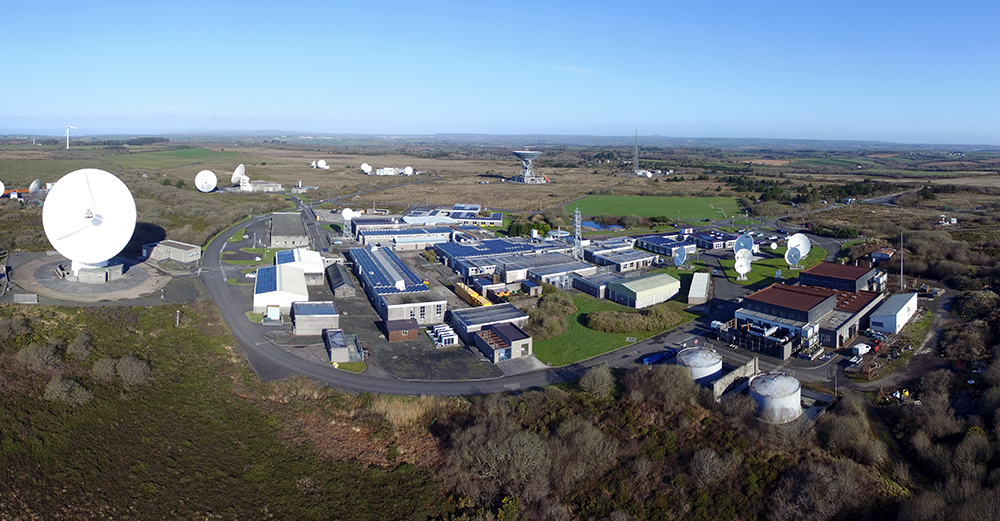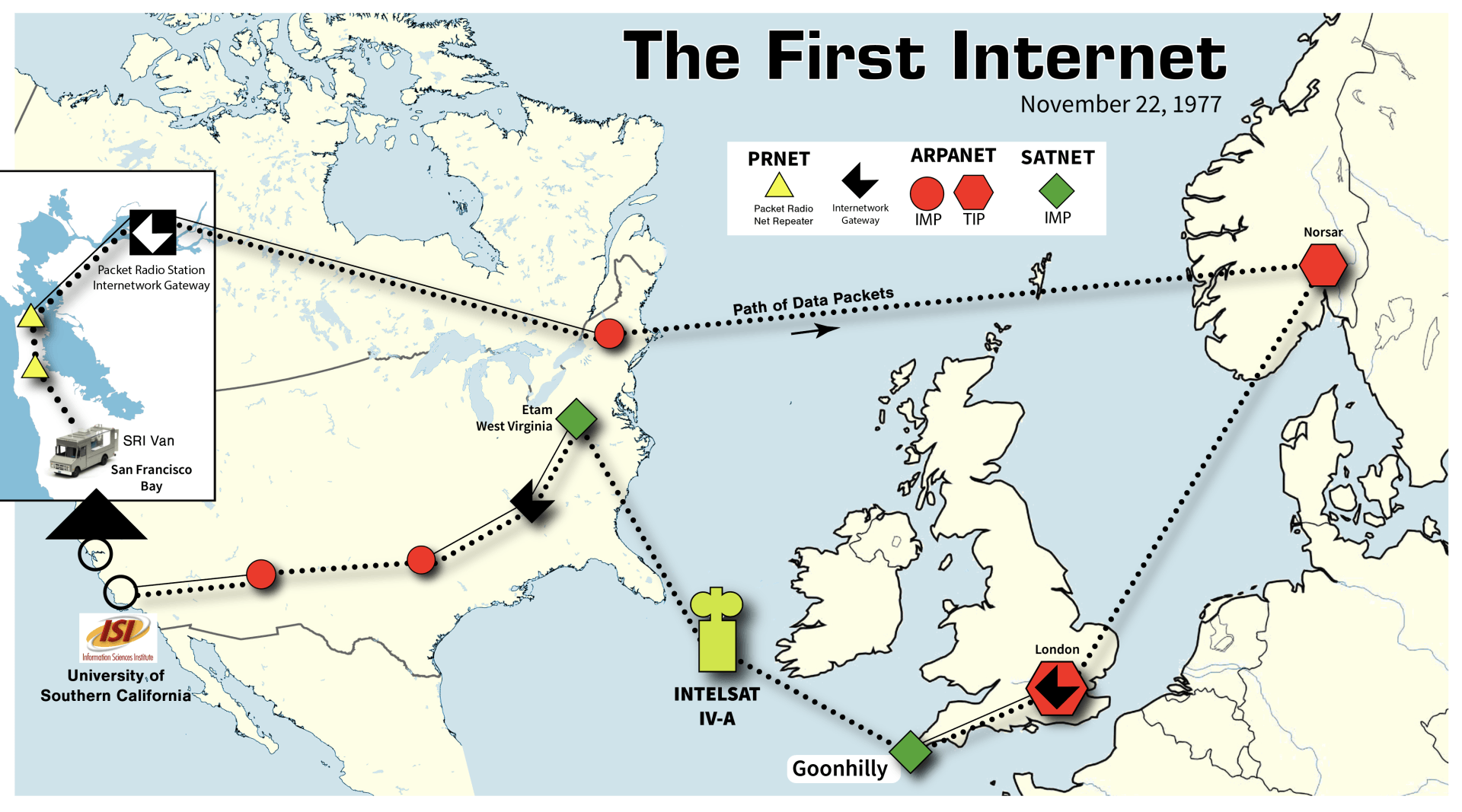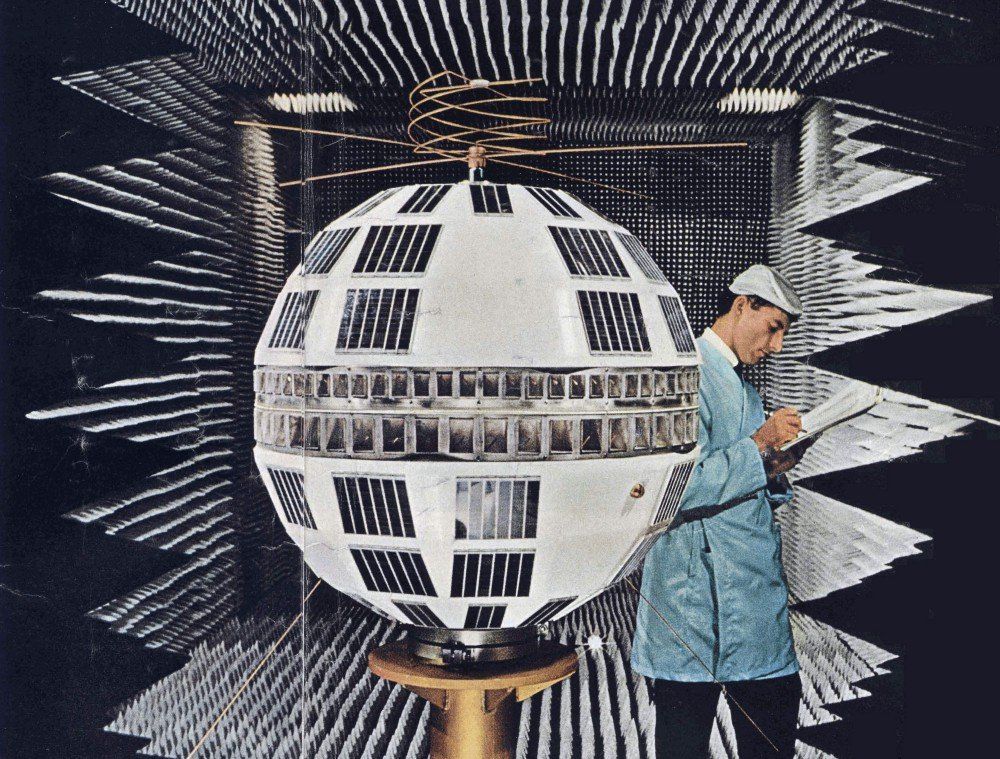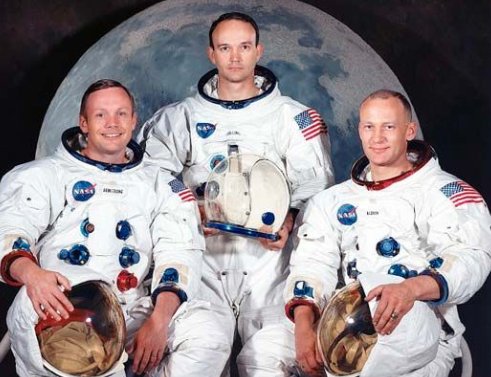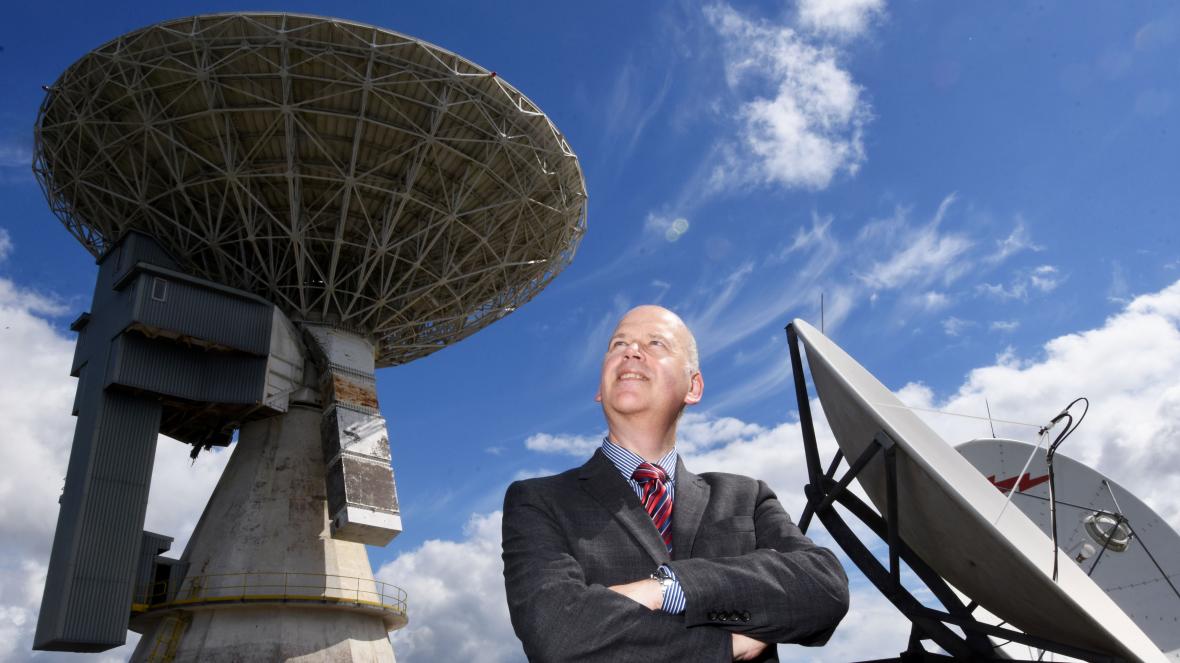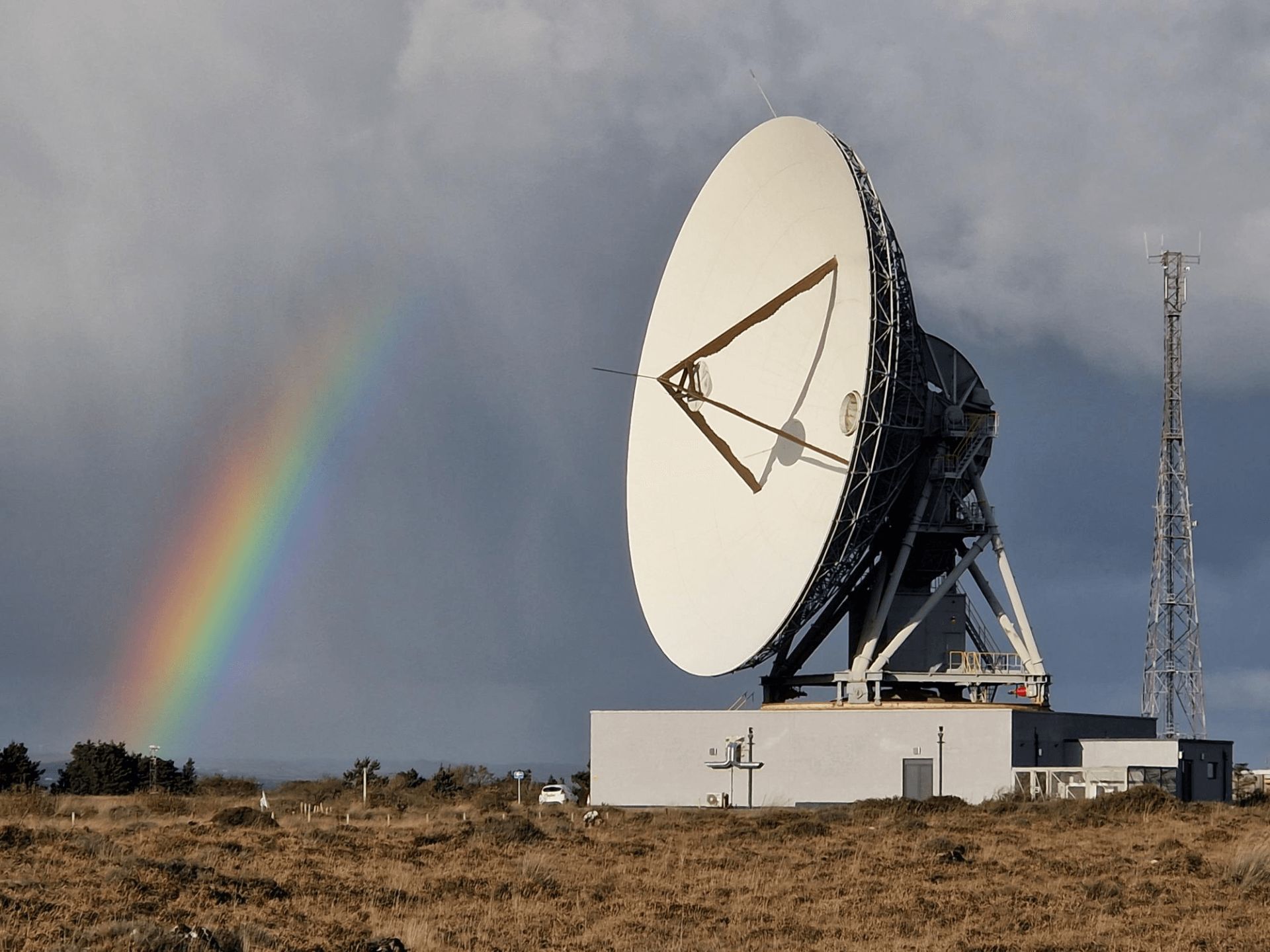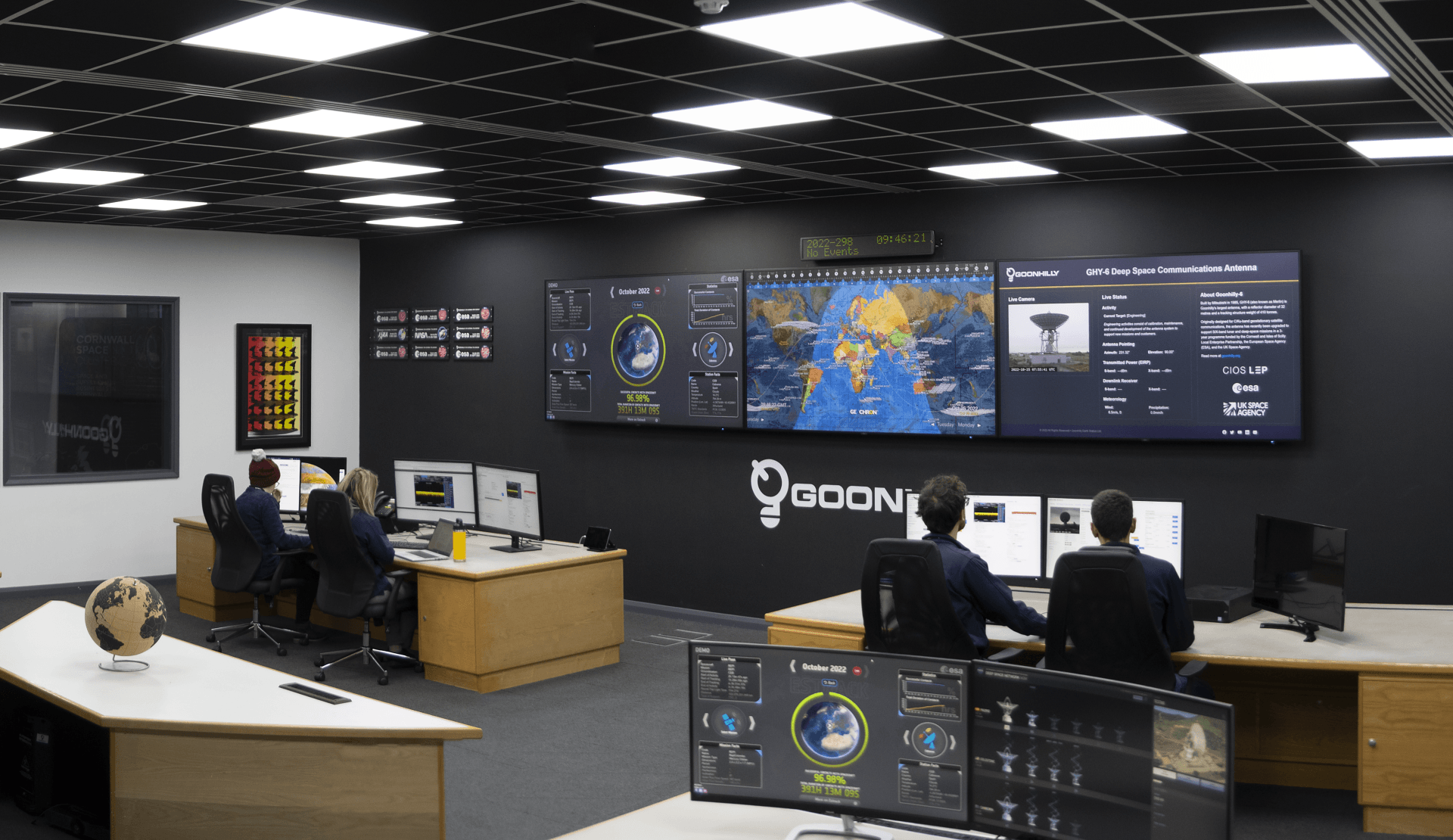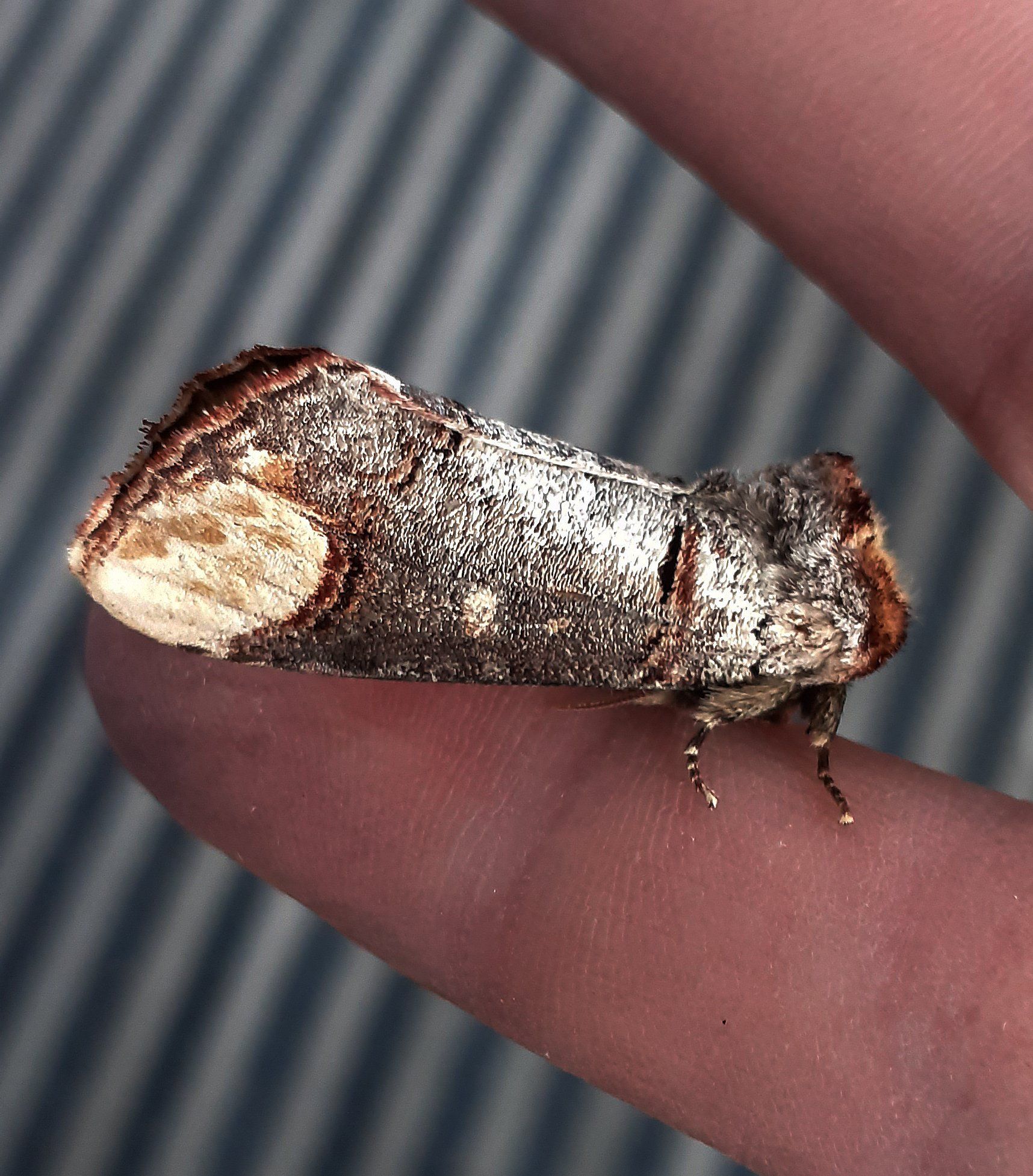Our Location
The ideal spot for Antennas, Computers, Goats and Alpacas
Other Areas
Ghy-3
Teleport
LEO/MEO/GEO
Reliability
Radio Astronomy
Unused
Antennas
Antennas
Antennas
Antennas
Heritage and Our Site
Goonhilly Earth Station Ltd has two sites within the UK located in Cornwall and Hampshire
Goonhilly HQ has a rich history, having participated in every milestone in the development of satellite telecommunications. Geographically, the site is situated over an area of 142 acres on the Lizard Peninsula, in Cornwall. Being surrounded by ocean in all directions except the north, and in a low population density area means we also have exceptionally low RF interference.
Our Farnborough office is home to a number of our expert research engineers, technical consultants, and project managers. Its convenient location is just a stone's throw from London.
Our Heritage
From the first Moon landing to future Mars missions
Goonhilly has been at the forefront of the satellite communications industry for over 50 years.
We first caught the public’s imagination in 1962 when our large dish, Aerial-1, known as Arthur, received the first transatlantic TV signal - a speech by President Kennedy via Telstar, the earliest communications satellite.
In 1969, the Apollo 11 Moon landing truly signalled the dawn of the space age. Arthur beamed Neil Armstrong’s first steps on the Moon to a global audience of around 600 million.
Arthur went on to broadcast Muhammad Ali fights and the 1985 Live Aid concerts as well as its bread and butter: phone calls, bank transactions and shipping distress calls.
By the 1970s, Goonhilly was the world’s largest earth station, transmitting and receiving communications from satellites. Every UK international call was spliced up here to be sent over satellite to its destination.
As the UK’s main route for international telephone calls over satellite, we were instrumental in the development of Intelsat, Eutelsat and Inmarsat.
Birth of the Internet
In 1991, we became the lynchpin in the Internet, connecting the East and West coasts of the US to Europe.
We are at the dawn of a new space era, where private companies are finding creative new ways of exploring and commercialising space, supported by our deep space communications.
With parallels to the new space economy moving from public ownership to private initiatives, in 2014, Goonhilly Earth Station Ltd, led by Ian Jones, acquired the site from BT.
Then in 2018, Peter Hargreaves, the billionaire behind Hargreaves Lansdown, invested £24M in the business.
Today we are involved in a diverse range of long-term collaborations, projects and innovations that will ensure Goonhilly continues to make history.
Commercial Deep Space network
Goonhilly now hosts the world’s first commercial deep space network antenna through a recent upgrade programme on our 32m antenna
GHY-6, allowing additional capacity that will extend existing NASA and ESA deep space networks.
Our heritage
From the first Moon landing to future Mars missions
Goonhilly has been at the forefront of the satellite communications industry for over 50 years.
We first caught the public’s imagination in 1962 when our large dish, Aerial-1, known as Arthur, received the first transatlantic TV signal - a speech by President Kennedy via Telstar, the earliest communications satellite.
In 1969, the Apollo 11 Moon landing truly signalled the dawn of the space age. Arthur beamed Neil Armstrong’s first steps on the Moon to a global audience of around 600 million.
Arthur went on to broadcast Muhammad Ali fights and the 1985 Live Aid concerts as well as its bread and butter: phone calls, bank transactions and shipping distress calls.
By the 1970s, Goonhilly was the world’s largest earth station, transmitting and receiving communications from satellites. Every UK international call was spliced up here to be sent over satellite to its destination.
As the UK’s main route for international telephone calls over satellite, we were instrumental in the development of Intelsat, Eutelsat and Inmarsat.
Birth of the Internet
In 1977, we became the lynchpin in the Internet, connecting the East and West coasts of the US to Europe.
The new space age
We are at the dawn of a new space era, where private companies are finding creative new ways of exploring and commercialising space, supported by our deep space communications services.
With parallels to the new space economy moving from public ownership to private initiatives, in 2014, Goonhilly Earth Station Ltd, led by Ian Jones, acquired the site from BT.
Then in 2018, Peter Hargreaves, the billionaire behind Hargreaves Lansdown, invested £24M in the business.
Today we are involved in a diverse range of long-term collaborations, projects and innovations that will ensure Goonhilly continues to make history.
Commercial deep space network
Goonhilly now hosts the world’s first commercial deep space network antenna through a recent upgrade programme on our 32m antenna GHY-6, allowing additional capacity that will extend existing NASA and ESA deep space networks.
Our Site
The Goonhilly Downs area is a Site of Special Scientific Interest (SSSI). Its sparse heathland features many rare plants thanks to the mild oceanic climate.
The Goonhilly site is steeped in pre-historic as well as recent communications history. Neolithic barrows, tumuli and monuments include a 3.2-metre high standing stone.
Our site is home to a menagerie of unique flora and fauna
Half a billion years ago two colliding continental plates scythed off a section of denser underlying mantle material, pushed it to the planet’s surface and crashed it into the southern flanks of the Cornish mainland, forming the Lizard Peninsula.
The resistance of this bedrock to water erosion, and a mild oceanic climate, combined over hundreds of thousands of years to form a microclimate inhabited by flora and fauna unique to the Lizard area.
Located in the middle of this landscape is Goonhilly Downs. An area covered in sparse heathland, peppered with numerous rare species of plant. Designated a Site of Special Scientific Interest (SSSI), it is home to many Red Data Book List species including Cornish Heath (Erica vagans) and Nightjars (Caprimulgus europaeus).
The unique nature of the dense mantle bedrock also provided the ideal foundations upon which to site the heavy Goonhilly dishes; thus was formed Goonhilly Earth Station.
Much like the Goonhilly Downs surrounding us, our site contains ponds, wetland areas, heathland, and withy woods, all of which attract a wealth of insects and birds, from dragonflies to herons and many migrant species of bird.
All Rights Reserved • Goonhilly Earth Station Ltd
All Rights Reserved • Goonhilly Earth Station Ltd
Goonhilly Downs, Helston, Cornwall, UK. TR12 6LQ
Terms of Use • Privacy Policy •
Sitemap •
Contact
Goonhilly Earth Station Ltd (Company No-06896077) VAT No: 109807310 - Registered office: Goonhilly Downs, Helston, Cornwall, TR12 6LQ.

